Category Archives: AI
Generative AI: Scaling Techniques for LLM Models
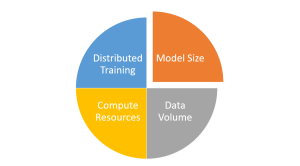
In the rapidly evolving world of artificial intelligence, large language models (LLMs) have emerged as a game-changing force, revolutionizing the way we interact with technology and transforming countless industries. These powerful models can perform a vast array of tasks, from text generation and translation to question-answering and summarization. However, unlocking the full potential of these LLMs requires a deep understanding of how to effectively scale these LLMs, ensuring optimal performance and capabilities. In this blog post, we will delve into the crucial concept of scaling techniques for LLM models and explore why mastering this aspect is essential for anyone working in the AI domain. As the complexity and size of …
Meta AI Announces Advancements in Embodied AI: Artificial Visual Cortex & Adaptive Skill Coordination

Meta AI has announced two major advancements in general-purpose embodied AI agents, focusing on challenging sensorimotor skills. These advancements include an artificial visual cortex called VC-1 and a new approach called Adaptive Skill Coordination (ASC). Both developments offer valuable benefits to data scientists and researchers in the field of AI. Embodied AI is field of AI focused on agents that can perceive, understand, and interact with their environment through sensorimotor experiences. It aims to create AI systems that can perform tasks in the physical world, bridging the gap between abstract thought and reasoning, and physical actions. VC-1 is a single perception model that supports a diverse range of sensorimotor skills, …
Support Vector Machine (SVM) Python Example
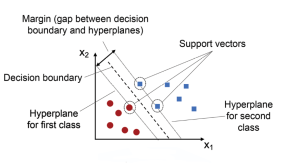
Support Vector Machines (SVMs) are a powerful and versatile machine learning algorithm that has gained widespread popularity among data scientists in recent years. SVMs are widely used for classification, regression, and outlier detection (one-class SVM), and have proven to be highly effective in solving complex problems in various fields, including computer vision (image classification, object detection, etc.), natural language processing (sentiment analysis, text classification, etc.), and bioinformatics (gene expression analysis, protein classification, disease diagnosis, etc.). In this post, you will learn about the concepts of Support Vector Machine (SVM) with the help of Python code example for building a machine learning classification model. We will work with Python Sklearn package for building the …
Machine Learning Bias Explained with Examples
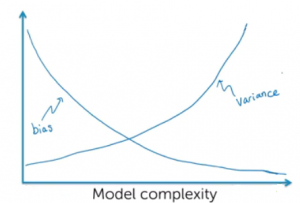
In the artificial intelligence (AI) / machine learning (ML) powered world where predictive models have started getting used more often in decision-making areas, the primary concerns of policy makers, auditors and end users have been to make sure that these systems using the models are not making biased/unfair decisions based on model predictions (intentional or unintentional discrimination). Imagine industries such as banking, insurance, and employment where models are used as solutions to decision-making problems such as shortlisting candidates for interviews, approving loans/credits, deciding insurance premiums etc. How harmful it could be to the end users as these decisions may impact their livelihood based on biased predictions made by the model, thereby, …
True Error vs Sample Error: Difference
Understanding the differences between true error and sample error is an important aspect of data science. In this blog post, we will be exploring the difference between these two common features of statistical inference. We’ll discuss what they are and how they differ from each other, as well as provide some examples of real-world scenarios where an understanding of both is important. By the end, you should have a better grasp of the differences between true error and sample error. In case you are a data scientist, you will want to understand the concept behind the true error and sample error. These concepts are key to understand for evaluating a …
Types of Probability Distributions: Codes, Examples

In this post, you will learn the definition of 25 different types of probability distributions. Probability distributions play an important role in statistics and in many other fields, such as economics, engineering, and finance. They are used to model all sorts of real-world phenomena, from the weather to stock market prices. Before we get into understanding different types of probability distributions, let’s understand some fundamentals. If you are a data scientist, you would like to go through these distributions. This page could also be seen as a cheat sheet for probability distributions. What are Probability Distributions? Probability distributions are a way of describing how likely it is for a random …
AI Product Manager Interview Questions

AI has become such an integral part of our lives that it is important to hire professionals who can help create AI / machine learning products that will be used by many people. These AI product manager interview questions will give you insight into your product manager candidate’s experience, skills, and industry knowledge so that you can get prepared in a better manner before appearing for your next interview as an AI product manager. Check out a detailed interview questions and answers with greater focus on machine learning topics. Before getting into the list of interview questions, lets understand what can be the job description of an AI product manager. …
Building AI-powered Organization & Cultural Traits
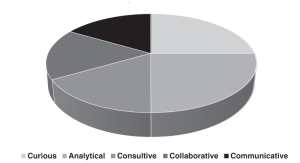
Artificial Intelligence (AI) has become an integral part of many organizations’ operations. From customer service to supply chain management, AI is increasingly being used to automate and streamline processes. However, AI can do more than just help you run your business more efficiently; it can also be used to build organizational culture and foster data-driven decision making in general while leveraging analytical tools & techniques. Let’s take a look at how AI-powered organizational and cultural traits can help improve the workplace. The following picture is a summary of cultural traits in AI-driven organization Be Curious The adoption of artificial intelligence (AI) within an organization can enhance curiosity in several ways. …
Challenges for Machine Learning / AI Projects

In this post, you will learn about some of the key challenges in relation to achieving successful AI / machine learning (ML) or Data science projects implementation in a consistent and sustained manner. As AI / ML project stakeholders including senior management stakeholders, data science architects, product managers, etc, you must get a good understanding of what would it take to successfully execute AI / ML projects and create value for the customers and the business. Whether you are building AI / ML products or enabling unique models for your clients in SaaS setup, you will come across most of these challenges. Understanding the Business Problem Many times, the nature …
Most Common Machine Learning Tasks
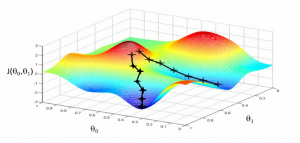
This article represents some of the most common machine learning tasks that one may come across while trying to solve machine learning problems. Also listed is a set of machine learning methods that could be used to resolve these tasks. Please feel free to comment/suggest if I missed mentioning one or more important points. Also, sorry for the typos. You might want to check out the post on what is machine learning?. Different aspects of machine learning concepts have been explained with the help of examples. Here is an excerpt from the page: Machine learning is about approximating mathematical functions (equations) representing real-world scenarios. These mathematical functions are also referred …
Supply chain management & Machine Learning
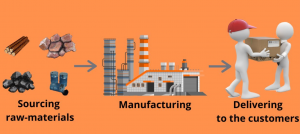
As supply chains become more complex, businesses are looking for new ways to optimize and automate their supply chain operations. One area that is seeing a lot of growth is the use of artificial intelligence (AI) and machine learning in supply chain management. There are many different applications for these technologies in supply chain management, from forecasting demand to optimizing inventory levels. In this blog post, we will explore some of the most interesting use cases for AI and machine learning in supply chain management. What is supply chain management and what are its key components? Supply chain management is the process of coordinating and controlling the flow of goods, …
Weak Supervised Learning: Concepts & Examples
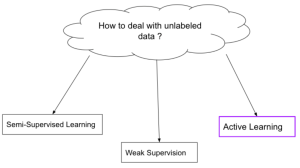
Supervised learning is a type of machine learning algorithm that uses a labeled dataset to learn and generalize from. The labels act as supervisors, providing the algorithm with feedback so it can learn to map input data to the correct output labels. In this blog post, we’ll be focusing on weak supervised learning, a subset of supervised learning that uses only partially labeled or unlabeled data. We’ll cover some of the most common weak supervision techniques and provide examples of each. What is Weak Supervised Learning? Weak supervised learning is a type of machine learning where the learner is only given a few labels to work with. Weak supervision is …
Healthcare Claims Processing AI Use Cases

In recent years, artificial intelligence (AI) / machine learning (ML) has begun to revolutionize many industries – and healthcare is no exception. Hospitals and insurance companies are now using AI to automate various tasks in the healthcare claims processing workflow. Claims processing is a complex and time-consuming task that often requires manual intervention. By using AI to automate claims processing, healthcare organizations can reduce costs, improve accuracy, and speed up the claims adjudication process. In this blog post, we will explore some of the most common use cases for healthcare claims processing AI / machine learning. Automated Data Entry One of the most time-consuming tasks in the claims process is …
ESG & AI / Machine Learning Use Cases

Environmental, social, and governance (ESG) factors are a set of standards used to evaluate a company’s performance on issues that have an impact on society and the environment. AI or machine learning can be used to help identify these factors. In this blog post, we will explore some use cases for how AI / machine learning can be used in conjunction with ESG factors. The following is a list of AI use cases related ESG. This list will be updated from time-to-time. Predict ESG ratings using fundamental dataset: Investors (asset managers and asset owners) started to assess companies based on how they handle sustainability issues. To do this assessment, investors …
How to Identify Use Cases for AI / Machine Learning
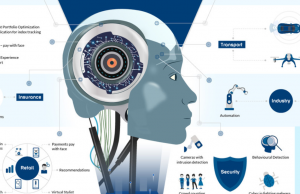
As artificial intelligence (AI ) and machine learning (ML) solutions and technologies continue to evolve, more and more businesses are looking for ways to incorporate them into their operations to realize a greater business impact. But with so many potential applications, it can be difficult to know where to start. In this blog post, we’ll outline some tips for identifying AI / ML use cases. We’ll also provide a few examples of how AI & machine learning can be used in business settings. So if you’re thinking about adding AI or machine learning to your toolkit, read on! This blog post will be appropriate for product managers, business analysts, data science …
Predicting Customer Churn with Machine Learning

Customer churn, also known as customer attrition, is a major problem for businesses that rely on recurring revenue. Customer churn costs businesses billions of dollars every year, and it’s only getting worse as customers become more and more fickle. In fact, it’s been estimated that the average company loses 10-15% of its customers each year. That number may seem small, but it can have a huge impact on a company’s bottom line. Fortunately, there’s a way to combat churn: by using machine learning to predict which customers are likely to churn. In this blog post, we’ll discuss how customer churn prediction works and why it’s so important. We’ll also provide …
I found it very helpful. However the differences are not too understandable for me